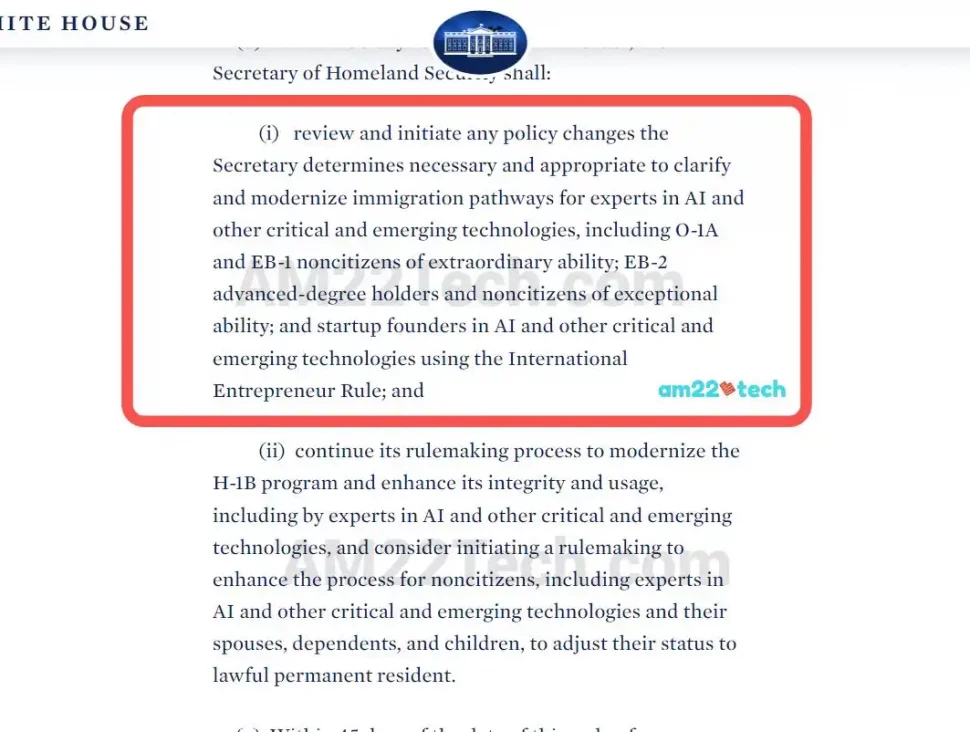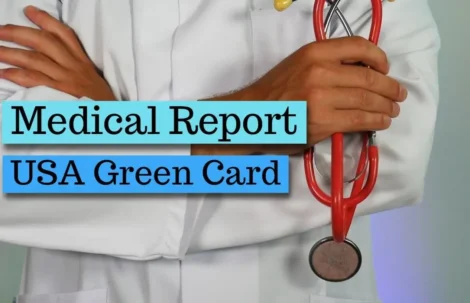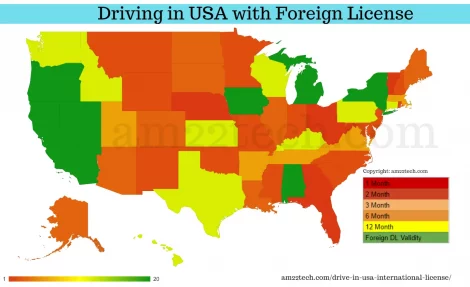Update 26 Jun 2024 – It has been more than 6 months and there is no new update from USCIS on how they will issue fast green cards for AI experts! We are keeping an eye on the news and will update as soon as we hear anything.
Earlier, White House issued an executive order on 30 Oct 2023 which aims to create AI (artificial intelligence) related laws.
The EO is a big announcement and shows that the US government is taking the advancements in AI technology extremely seriously.
The most important aspect of this EO order is the immigration part where President Biden has asked DOS to consider creating processes to give Green cards faster to people working in AI-related jobs and research fields.
This article will discuss:
- What does a faster Green Card mean?
- What can Indians, stuck in a vast backlog gain from this executive order?
- FAQ
- What are Emerging Technologies apart from AI?
- Advanced Computing
- Advanced Engineering Materials
- Advanced Gas Turbine Engine Technologies
- Advanced Manufacturing
- Advanced and Networked Sensing and Signature Management
- Advanced Nuclear Energy Technologies
- Artificial Intelligence
- Autonomous Systems and Robotics
- Biotechnologies
- Communication and Networking Technologies
- Directed Energy
- Financial Technologies
- Human-Machine Interfaces
- Hypersonics
- Networked Sensors and Sensing
- Quantum Information Technologies
- Renewable Energy Generation and Storage
- Semiconductors and Microelectronics
- Space Technologies and Systems
- More Questions?
What does a faster Green Card mean?
As per my understanding, the faster green card means expedited processing of the i485 application.
It does not mean giving extra green card numbers to a specific country or increasing the number of green cards issued to employment-based categories.
What can Indians, stuck in a vast backlog gain from this executive order?
It is possible that USCIS will create a relaxed or separate category within EB1-B where they allow people to work in the AI field.
This is just our assumption based on the language in the EO, which has asked DOS to create processes and streams for easier Green cards in EB1 and EB2 categories.

There is no mention of country-based limits and it can’t be changed either with an executive order. Hence, whatever they intend to do, has to be done within the EB1 and EB2 categories.
DOS has been given 180 days:
- To analyze, create, and publish the policies that help foreign nationals working in the AI field to stay and convert to green card status.
- Create a program to identify and attract top talent in AI at US universities, research institutions, and the private sector overseas.
- Expedited visa renewals for AI workers within the USA (through the pilot program starting in 2024).
- Faster H1B, O-1, and J-1 visa processing, and expedited visa appointments for people working in AI fields.
- Support and attract foreign nationals with special skills in AI and other critical and emerging technologies seeking to work, study, or conduct research in the United States.
FAQ
It is expected that USCIS and DOS will come up with concrete policies and processes within 180 days from 30 Oct 2023.
Hence, the expected date is 1 May 2024.
You should be able to change your H1B job profile if the AI job is the same or similar to the existing H1B job.
Same or similar is a general rule which means that if your new job profile is about 50% same, you should face no issue.
Example:
A Java software developer on an H1B visa should be able to easily change to an AI (artificial intelligence) job and get an H1B extension, amendment, or transfer approved.
At this time, there is no such policy available.
You may need a new PERM if the job profile and/or job location is changing. This will depend on many other factors.
Yes, you should be able to upgrade your EB2/3 application to EB1 if you are eligible for it based on what rules/policies USCIS sets up.
We will update as and when USCIS publishes any such rules.
What are Emerging Technologies apart from AI?
These are the technology areas that will be prioritized for US green card, work, and study visas.
- Supercomputing, Edge, and cloud computing
- Data storage
- Computing architectures
- Data processing and analysis techniques
- Materials by design and material genomics
- Materials with new properties
- Materials with substantial improvements to existing properties
- Material property characterization and lifecycle assessment
- Aerospace, maritime, and industrial development and production technologies
- Full-authority digital engine control, hot-section manufacturing, and associated technologies
- Additive manufacturing
- Clean, sustainable manufacturing
- Smart Manufacturing
- Nanomanufacturing
- Payloads, sensors, and instruments
- Sensor processing and data fusion
- Adaptive optics
- Remote sensing of the Earth
- Signature management
- Nuclear materials, Chemical weapons, Biological weapons, Emerging pathogens detection and characterization
- Transportation, Security, Health, Energy, Building, Environmental sector sensing
Nuclear, Fusion, Space nuclear power, and propulsion energy systems
- Machine, Deep, Reinforcement learning
- Sensory perception and recognition
- Next-generation AI
- Planning, reasoning, and decision-making
- Safe and/or secure AI
Surfaces, Air, Maritime, Space
- Nucleic acid and protein synthesis
- Genome and protein engineering including design tools
- Multi-omics and other biometeorology, bioinformatics, predictive modeling, and analytical tools
for functional phenotypes - Engineering of multicellular systems
- Engineering of viral and viral delivery systems
- Biomanufacturing and bioprocessing technologies
- Radio-frequency (RF) and mixed-signal circuits, antennas, filters, and components
- Spectrum management technologies
- Next-generation wireless networks, including 5G and 6G
- Optical links and fiber technologies
- Terrestrial/undersea cables
- Satellite-based communications
- Hardware, firmware, and software
- Communications and network security
- Mesh networks/infrastructure independent communication technologies
- Lasers
- High-power microwaves
- Particle beams
- Distributed ledger technologies
- Digital assets
- Digital payment technologies
- Digital identity infrastructure
- Augmented reality
- Virtual reality
- Brain-computer interfaces
- Human-machine teaming
- Propulsion
- Aerodynamics and control
- Materials
- Detection, tracking, and characterization
- Defense
- Quantum computing
- Materials, isotopes, and fabrication techniques for quantum devices
- Post-quantum cryptography
- Quantum sensing
- Quantum networking
- Renewable generation
- Renewable and sustainable fuels
- Energy storage
- Electric and hybrid engines
- Batteries
- Grid integration technologies
- Energy-efficiency technologies
- Design and electronic design automation tools
- Manufacturing process technologies and manufacturing equipment
- Beyond complementary metal-oxide-semiconductor (CMOS) technology
- Heterogeneous integration and advanced packaging
- Specialized/tailored hardware components for artificial intelligence, natural and hostile
radiation environments, RF and optical components, high-power devices, and other critical
applications - Novel materials for advanced microelectronics
- Wide-bandgap and ultra-wide-bandgap technologies for power management, distribution, and
transmission
- On-orbit servicing, assembly, and manufacturing
- Commoditized satellite buses
- Low-cost launch vehicles
- Sensors for local and wide-field imaging
- Space propulsion
- Resilient positioning, navigation, and timing (PNT)
- Cryogenic fluid management
- Entry, descent, and landing
The full list of emerging technologies is given here.
More Questions?
Ask them in the comments and I will answer them to the best of my knowledge.
I will also add Q&A above as I get more questions from people.
Source: White House Executive Order




